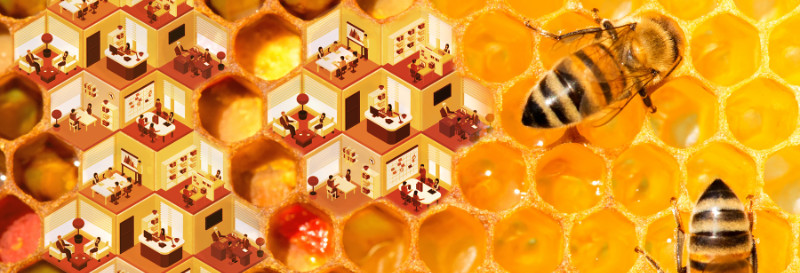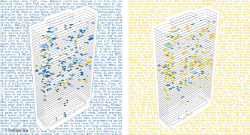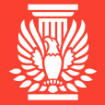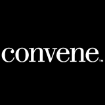Lessons from the great outdoors

Diversity helps teams survive and thrive
At long last, the chill of winter is fading here in New York, and the city is bursting into bloom. Our condolences to you allergy sufferers!
This time of year, it’s not hard to find inspiration out-of-doors. In this month’s On Our Minds, we’re contemplating how all that beautiful variety outside leads to resilience, and how our workplaces can benefit from the same.
On our minds
Every spring, even in our concrete jungle, life returns anew. Amidst the bounty, there’s a nugget of wisdom about sustainability and resilience in a complex world - one that business leaders would be wise to heed.
Nature as guide
You know that grass that grows on sand dunes? This unassuming plant is actually very important, locking down the sand so it doesn’t blow or wash away. Now imagine a beach that has two different species of grass, one of which thrives in dry conditions while the other succeeds in wet weather. Regardless of the rain, some kind of grass will do well. If only one of those species is present, it might wither, allowing the dune to erode and reshaping the entire beach. The presence of more than one species of grass makes the whole ecosystem more resilient.
Ecologists call this the "diversity-stability hypothesis", and it’s supported by fascinating studies from the grasslands of Mongolia to the Great Barrier Reef.
Whether or not you're into nature, consider the practical implications for human beings. When farmers rely too much on a particular species, like a specific strain of potato, a single pest can lead to a disastrous crop failure and famine. Growing a few varieties increases the odds that some will survive.
Building workplace resilience
There are plenty of ways that people take inspiration from nature, and there is a growing body of evidence that teams, particularly problem-solving teams, are objectively better when they are diverse. Companies with more women at the top tend to be more profitable. A recent study shows that companies with more diverse teams file more patents, create more new products, and make more money. Furthermore, the same study found that the effect was greatest during economic downturns when a company may be on the rocks.
In addition to the types of diversity most-often discussed (race, gender, and age), there are other kinds that play a powerful role in team dynamic and creative performance, like socioeconomic diversity, cognitive diversity, and diversity of political thought. These potentially less-obvious forms can also confer competitive advantages by equipping your team with the broadest possible set of skills and experiences, helping you to understand customers and partners.
This won’t always be easy, of course. We have a natural tendency to choose to be with people similar to ourselves. Network scientists call this homophily, and it may be part of the reason that building and maintaining a diverse workplace remains a challenge, particularly in the tech industry.
Putting money (and space) where your mouth is
Much of business and management literature is focused on policies and procedures to encourage diversity, but underrepresents both the symbolic and practical value of the built environment. The physical spaces and services we provide in the workplace serve as extensions of our values, and present an opportunity for inclusion. On the other hand, failing to take proactive steps will naturally limit who feels most encouraged to stick around and thrive long-term.
Looking for ideas? If you want your workplace to support both introverts and extroverts, are you providing spaces that suit each style? Perhaps it’s time to demonstrate support for working mothers by designating a room for nursing. Maybe that conference room that never gets booked can be transformed into a place to meditate. A space for prayer could indicate the direction of Mecca, including a diversity of religious beliefs. The office kitchen could be stocked with kombucha, tea, or other choices beyond the usual coffee.
Some of these things may seem small in the context of the entire business, but they can enable a broader set of people to feel welcomed and enabled by the environment. Some of your team members might not notice the changes, but to others they may be deeply meaningful. People are not always comfortable asking for these things directly, so it’s on leaders to take the initiative. Conversely, silence from leaders can be interpreted as tacit endorsement of the status quo. Even proposing changes can start a productive conversation that leads to the right fit for your team. Here’s to more thriving all around!
From the archives
Two years ago, we spoke with our friends at Verizon and Cornell about designing workspaces to enable innovation and individual success, citing examples from PLASTARC’s work with corporate and coworking clients.
Way back in April of 2013, we moderated this panel at AIA on the use of talent metrics to enhance teamwork and organizational culture. We highlighted the importance of a diversity of behaviors and skills to the long-term sustainability of a business, particularly for the creative industry.
That’s all for now. We’re always ready to talk about how to make your workplace more resilient and welcoming - or to chat about your favorite spring flowers. Don’t forget to stop for a moment to smell those flowers, or take in the many multisensory splendors of this season!
In Case You Missed It
Recent events, current articles and things that 'caught our eye' last month:

Bridging Qualitative and Quantitative Data
PLASTARC moderated this engaging discussion about using data to optimize design. Hosted by AIA New York.

Wharton People Analytics Conference
This marked the fourth year that PLASTARC attended the WPAC, which provided insightful content and connections between the data-driven and human aspects of work and organizations.

Tracking the Bay Area’s Workforce
Back in February, economists from LinkedIn shared insights gleaned from their data on 146 million US workers. Presented by the SPUR Urban Center in San Francisco.
Looking Ahead
We’re always looking for new opportunities to learn and share, and this spring is a busy time. Here’s what’s on the docket:

AIA Honors and Awards Luncheon 2018
PLASTARC will join other members of the architecture community to honor excellence in design. Proceeds benefit AIA New York. April 20 at Cipriani Wall Street.

Global Coworking Unconference Conference
Now in its seventh year, GCUC (“juicy”) brings together experts from the coworking industry, April 22-24 in NYC. We spoke here in 2016.

Architectural Tour of Joya Studio
The MIT Club of New York and MITArchA host this tour of Joya Studio’s flagship retail space, designed by Taylor and Miller, April 25.

Art of Enterprise
Learn from founders who are disrupting the status quo to create breakthrough companies. Panelists include founders Convene - Chris Kelly, Absolut Art - Nahema Mehta, and The New Stand - Andrew Deitchman, May 14.
Worktech NYC
One of our favorite events for years, WORKTECH18 New York will attract some of the biggest and brightest names to share the latest thinking on the Future of Work, May 17.

Catalyst: How Owners Can Progress the Urban Landscape
PLASTARC moderates this discussion amongst real estate leader transforming the urban landscape through both development and re-positioning, May 18 in NYC.

